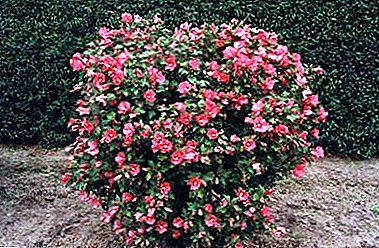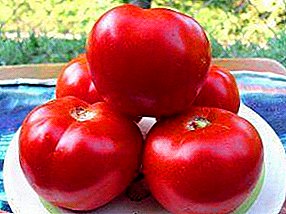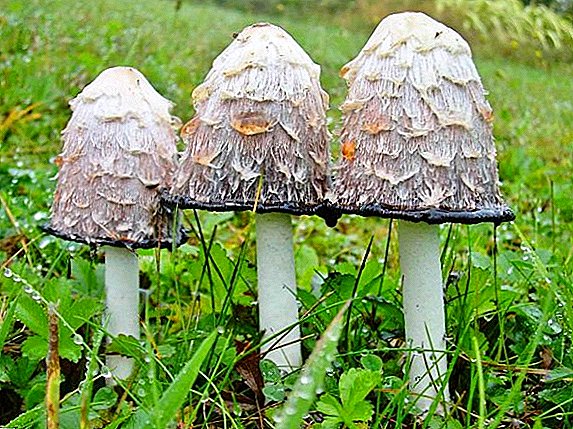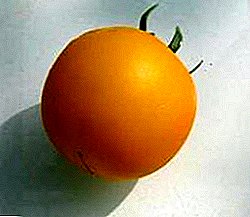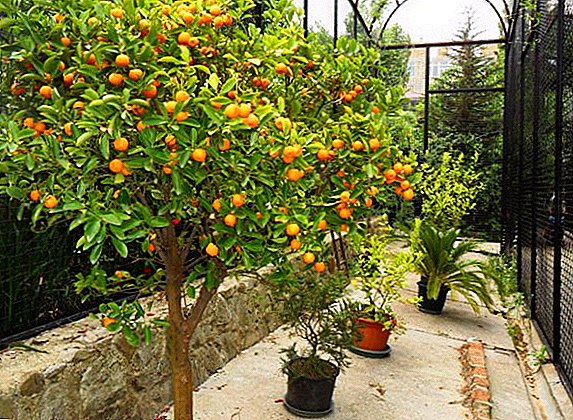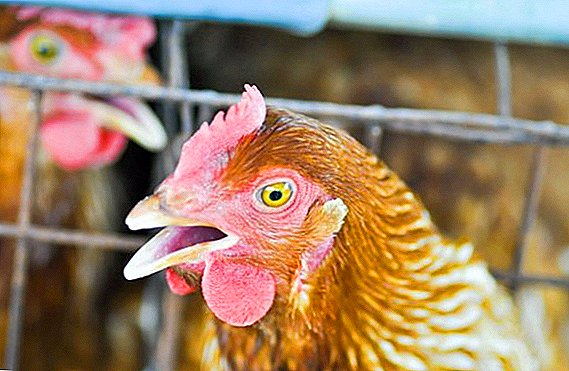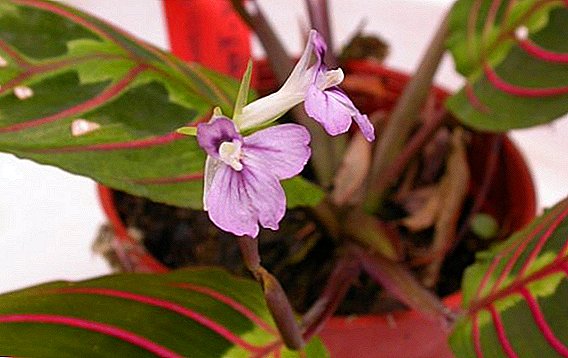 Maranta tricolor is a popular flower among flower growers. In order to maintain and grow it at home, you need to know the rules of caring for it, as well as methods of reproduction and other subtleties. All this you will learn from our article.
Maranta tricolor is a popular flower among flower growers. In order to maintain and grow it at home, you need to know the rules of caring for it, as well as methods of reproduction and other subtleties. All this you will learn from our article.
Description and characteristics of indoor plants
Brazil is the birthplace of three-color arrowroot. Named flower in honor of the Venetian doctor and botanist Bartolomeo Maranta. Some signs are associated with this flower, which is why many flower growers call it a pilgrim or a prayer plant. This name appeared because of the unusual shape of the leaves of the plant, which resemble folded hands in prayer.  Leaves of arrowroot have different colors from the inside and outside, as a result of which the plant changes its color in the daytime and at night. Indoor plant arrowroot tricolor, or fascinator, has the following characteristics:
Leaves of arrowroot have different colors from the inside and outside, as a result of which the plant changes its color in the daytime and at night. Indoor plant arrowroot tricolor, or fascinator, has the following characteristics:
- low plant - 20-25 cm;
- has a root in the form of a tuber;
- leaves pubescent, lanceolate, 12 cm long;
- leaf color is green or dark green, they are covered on the upper side with red, and on the lower side with pink veins;
- inflorescence spiciform, lilac color.
Did you know? Maranta tricolor is a source of starch, it is used for domestic purposes in tropical regions of Africa.
Conditions for growing at home
To grow this flower at home, you need to create favorable climatic conditions for its maintenance. To do this, you need to know at what temperature and humidity the plant can be grown and from which side of the house it is better to place a flower.
Location and lighting
It is best to place arrowroot next to other flowers in the western or eastern part of the room, preferably in partial shade, because the flower can get burned from direct sunlight. If you place the plant in the northern part of the room, then it will experience a lack of light, because of which the color of the leaves will lose its brightness.  It is possible to move a flowerpot with a flower to the northern part of the apartment in the winter, at the same time it is necessary to use additional lighting with the help of fluorescent lamps. Under artificial light, the flower should be about 16 hours a day. Maranta tricolor blooms rarely in apartments, but if you create all the necessary conditions for it, you can achieve its flowering.
It is possible to move a flowerpot with a flower to the northern part of the apartment in the winter, at the same time it is necessary to use additional lighting with the help of fluorescent lamps. Under artificial light, the flower should be about 16 hours a day. Maranta tricolor blooms rarely in apartments, but if you create all the necessary conditions for it, you can achieve its flowering.
Air temperature and humidity
Maranta is a heat-loving plant, therefore in summer its temperature should be + 20 ... + 25 ° С. In the dormant period, which begins in the fall and lasts until the end of winter, the flower must be moved to a cool place. For this, the temperature is reduced to + 18 ... + 20 ° С.
In addition to overheating, the plant is in danger:
- decrease in temperature to + 10 ° С;
- the presence of drafts;
- sudden change in temperature.
Important! In summer, the flower can be hung in a flowerpot on the street, in a place where there are no drafts.Maranta tricolor prefers high humidity, which should be 55-60%, so throughout the year the flower must be constantly sprayed with a spray bottle. With low humidity, the tips of the leaves begin to dry out. To avoid this, it is necessary to place a pot with a plant next to the aquarium or water tank.
Home care
When growing this flower, it is important not only proper placement, but also further care. To do this, it is necessary to carry out such procedures as irrigation, fertilization, pruning, transplantation. 
Watering rules
Since the arrowroot likes high humidity, you need to water it often. For this purpose, distilled water is used, the temperature of which must be at least + 15 ° C. In the summer, the plant needs to be watered every other day in order for the soil to dry out. In winter, watering is reduced and carried out every 3 days. Watering is carried out directly under the root, and as soon as the water flows into the pan, it must be immediately poured to avoid rotting of the roots.
Important! The development of arrowroot slows down if it is kept in a cold room with high humidity. In this case, there may be a risk of rotting of the roots, due to which the plant may die.
Top dressing
For fertilizing arrowroot use poorly concentrated fertilizers. Podkramlivayut flower during the growing season 2 times a month, in the fall you need to reduce fertilizer to 1 time per month. As organic and mineral fertilizers can be used (necessarily alternate):
- solution of mullein, bird droppings and potassium humate (1: 1: 1);
- "Agricol" or "Kemira wagon" (use according to the instructions).

Pruning
Trimming the flower is carried out to form a bush, as well as if there is a need for it. It is recommended to carry out this procedure once in two years, at the same time only long branches are pruned, which will allow new branches to appear in the center of the flower. With this procedure, the plant becomes more magnificent view. In the spring, you can cut off all the shoots, and after a month and a half the flower will not only recover, but also rejuvenate.
Transfer
Transplant arrowroot in a new container in the spring. Before you begin this process, you need to prepare a flower and soil for transplanting. Step-by-step instruction:
- Take a large, but not deep plastic pot (the roots of a flower do not go deep, but, on the contrary, like space).
- Fill the bottom with a drainage of 5 cm (crushed stone, pebbles or expanded clay can be used).
- Prepare the ground. You can buy it in specialized stores or prepare it yourself, for which you need to mix deciduous humus, peat and coniferous bark in a ratio of 2: 1: 1, you can add sphagnum or river sand to this composition.
- Liberally pour the plant, gently remove it from the pot, move it along with a clod of earth into a new container and sprinkle it with the prepared soil, then compact it.
Video: arrowroot tricolor transplant
Breeding
There are 4 ways of breeding arrowroot tricolor:
- division of the bush;
- cuttings;
- aerial roots;
- using seeds.
Did you know? Maranta has useful properties: it helps those who suffer from insomnia, and also absorbs bad energy at home.
Dividing bush
The division of the bush is a more reliable and simple method by which you can propagate the arrowroot. This method does not require much effort and is simple to perform.
Step-by-step instruction:
- During transplantation, carefully remove the plant from the pot, divide its tubers into 2-3 parts, each of which should have a growing point and roots.
- To process cuts with crushed wood charcoal, then dry.
- Prepare a soil mixture (the composition is identical to that used during transplantation).
- To plant planting material in a pot, sprinkle with soil, compacted.
- Pour over settled water at room temperature.
- Cover the top with a food film to create a greenhouse effect.
- Regularly air and water the seedlings.
- When new stems with leaves appear, the film needs to be removed. Further care for young plants is the same as for adult flowers.

Cuttings
After dividing the bush reproduction with cuttings takes second place.
Step-by-step instruction:
- Cut off in the middle of spring or early autumn tops of the shoots, the length of which should be 10 cm. At the same time they should be 2-3 leaves and 2 internodes.
- Place the cuttings in the water. For 7 days, the roots will appear.
- The further landing process is exactly the same as when dividing a bush.
Video: reproduction of arrowroot tricolor cuttings
Aerial roots
Reproduction using aerial roots is possible only in an adult flower. Over the summer and autumn on it formed roots, growing to 15 cm in length. By the beginning of spring buds are formed on them, from which leaves later bloom. When such sockets with 2-3 leaves and a part of the air root appear, they must be cut off and transplanted into the soil. 
Seeds
This method is used extremely rarely, because it is more time consuming. In order to grow an arrowroot from seed, it is necessary:
- Purchase seeds in a specialty store.
- Prepare the soil (its composition is identical to that used during transplantation).
- Fill the container with prepared soil, make small depressions, place seeds in them.
- Pour warm water over it, cover the container with food film to create the greenhouse effect.
- Place the container in a room where the air temperature will be within + 16 ... + 18 ° С.
- Regularly air and water the seedlings.
- After the sprouts appear, remove the film.
- As soon as the root system of seedlings is stronger, you can replace them in permanent pots.
Learn more, how to feed indoor plants.
Diseases and pests
Maranta is practically not sick, and often suffers from improper care. At the same time there are pests that cause great damage to the plant.
These include:
- Spider mite - appears at high temperatures. The main symptoms of spider mite are white dots on the leaves. For the destruction of the pest use insecticides, for example, the drug "Actellic".

- Mealybug - the main sign of the parasite is yellowing or falling off of the leaves, as well as damage to them and signs of fungal infection. To get rid of the mealybug, you need to treat the plant with soapy water, and also spray the soil with the drug "Fitoverm".

- Thrips - their main feature is the appearance of yellow spots on the leaves, their fall, as well as growths on the roots. To get rid of pests, it is necessary to process the plant "Aktellik".
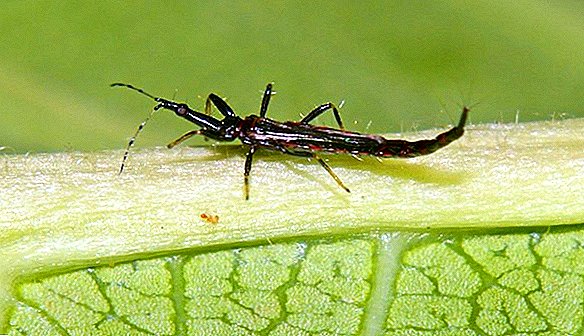
- Shchitovka - in the presence of this pest on the leaves appear yellow or brown spots, which then increase in size. To combat the scypes use the drug "Aktara".

Difficulty growing
Many novice flower growers who are not familiar with the rules of care for the arrowroot, may face difficulties in growing this flower.
Consider the most common problems:
- Yellowing leaves - occurs due to improper maintenance of the flower: low temperature and humidity, the presence of drafts.
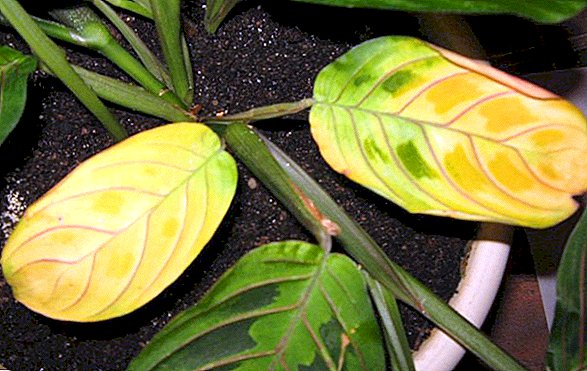
- Dark spots on the leaves - This problem arises due to the lack of minerals in the soil. To avoid this problem, you need to timely fertilize.

- Twisted leaves - appear when there is a shortage of heat and moisture.
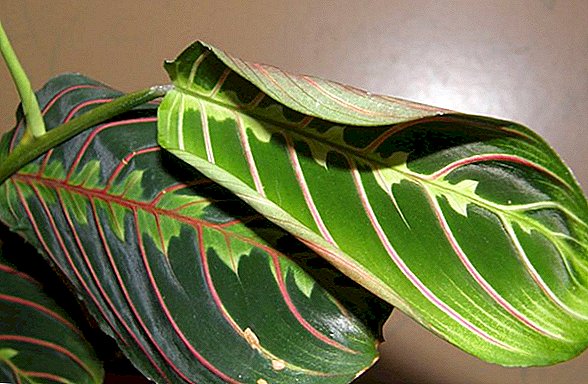
- Slow growth Drying of the tips of the leaves - the reason is the high content of nutrients in the soil, as well as excess light.










